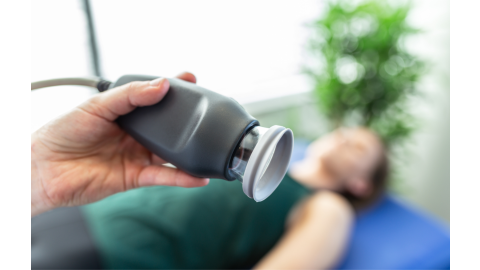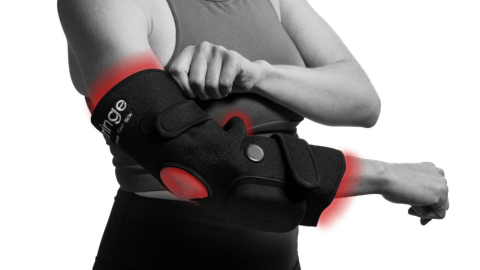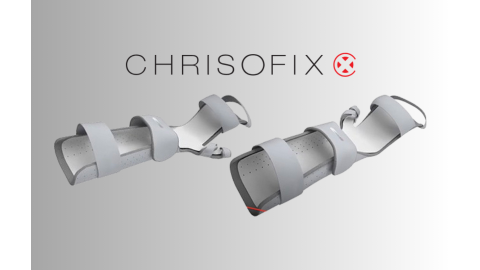Most ballerinas want a few more degrees of rotation in their turnout and many can improve with stretching and strengthening exercises. But there are some things you should know before you start working towards that complete turnout.
What is a turnout?
Let’s start with the basics, a turnout is an important part of classical ballet technique. You may have heard your teacher talk about it in class. It’s measured by the angle that forms between the center lines of the feet when both heels are touching (such as in first position). A 180° turnout is considered a “complete turnout” and isn’t possible without conditioning. Even with exercise, your body places some limitations on your turnout potential.
Top 3 Turnout Myths
1. I should walk everywhere with my feet turned out.
FALSE- This won’t improve your turnout, but it might give you hip, knee, and ankle pain. It also makes the muscles overtired, so they aren’t as strong when you need them. In fact, sometimes exercises that work on turning in are useful to keep your muscles from getting tight.
2. Don’t push your turnout or you can hurt yourself.
FALSE- You should never force your turnout. But you do need to challenge yourself and work to your maximum rotation. Otherwise, you won’t make any progress.
3. I need a 180° turnout to be a professional dancer.
FALSE- Most professional dancers don’t have a perfect turnout. Instead, they’ve learned to control their turnout and make the best of their rotation.
Does a turnout come from my hips, knees or ankles?
All three! 60% of your turnout rotation comes from your hips, 20-30% from the ankle, and the remainder from your knee and tibia. You need to make sure your turnout includes the rotation of each part and not just your ankle to avoid injury. When in doubt, focus on turning from your hip.
Limitations
There are five main components that control how much you can turn out.
Four aspects you can’t change or control:
1. Femoral (thigh bone) Anteversion vs. Retroversion Angle
- If your thigh bone shaft has a retroversion angle, your toes naturally point outward, making your turnout easier.
2.Orientation of the acetabulum (Hip Socket)
- Everyone’s hip sockets face to the side and forward to different degrees. If yours is more side facing, it allows a greater turn out from the hips.
3. Shape of the femoral (thigh bone) head
- The head is the top part of the thigh bone where it meets your hip bone socket. A long, concave head is less likely to touch your socket, giving you a greater range of motion when turning out.
4. Elasticity of iliofemoral ligaments (ligaments around your hip)
- If your ligaments that control extension are more flexible and elastic, you’ll have less resistance when working on your turnouts.
All of these aspects of a turnout depend on you winning the genetic lottery. But there is one factor you can control.
5. Your Hip Muscles/Tendons
- You can increase the strength and flexibility of the muscles around your hip by doing exercises. Try these exercises to reach your maximum potential!
4 Exercises to Improve Your Ballet Turnout
1. Side-Lying Clam Exercise
If you’re looking to improve your turnout, a greater hip rotation is probably one of the things on your list. This exercise works your hip flexors.
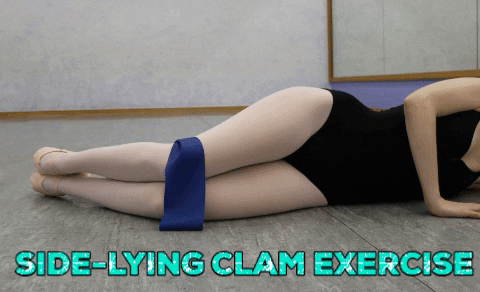
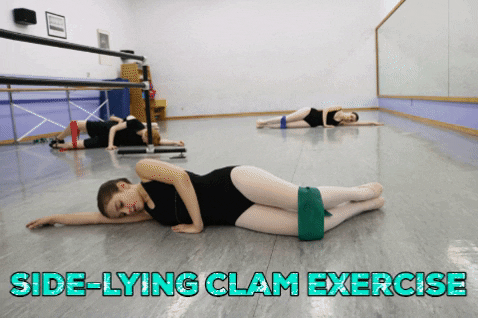
- Lay on your side
- Pull a 12” loop of resistance band upward, placing it a few inches above your knees
- Bend your knees and hips 30°
- Keep your feet together throughout this exercise
- Your bottom knee should remain pressed against the floor as you slowly lift your top knee up
- Hold for a few seconds, slowly lower your knee, and repeat
- Switch to the opposite side
2. Tensor Fasciae Latae (TFL) Turn-In Stretch
It may seem weird, but when you’re working on improving your turnout, you also need to stretch your “turn-in” muscles. It’s important to keep the muscles balanced so they work together to their maximum potential.
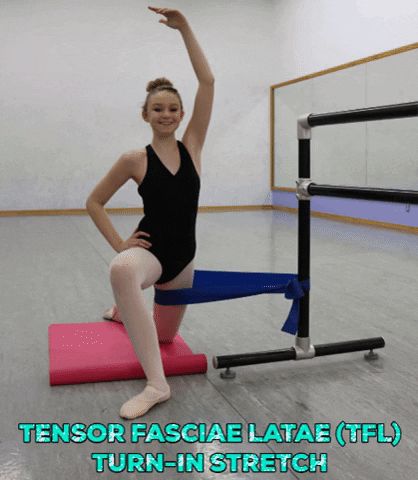
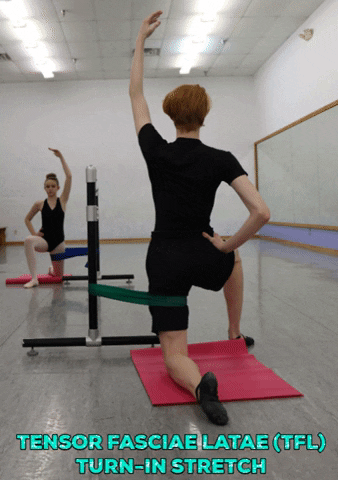
- Tie your TheraBand Resistance Band to a secure anchor point forming a loop
- Face the anchor and loop the band around your upper left thigh
- Perform a lunge stepping forward with your right leg and kneeling with your left knee on the floor (forming a 90° angle)
- Turn your right lower leg and foot outward and lean forward slightly
- Lift your left arm above your head and lean to the right for a good stretch
- Switch to the opposite leg
3. Piriformis Exercise
Your piriformis muscle helps rotate your legs and feet outward (40% of your turnout rotation). It also helps stabilize your hips. These are two reasons why this exercise is so important.
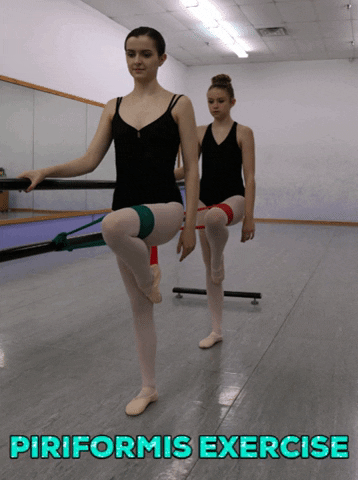
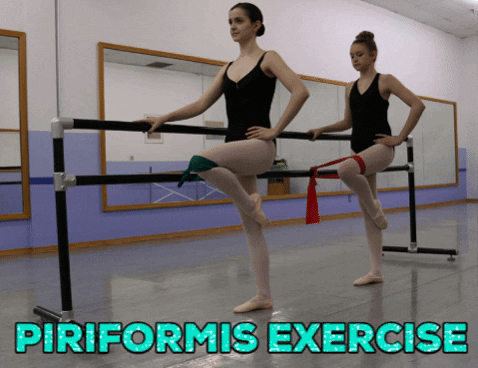
- Tie your TheraBand Resistance Band around the barre (use a secure anchor at a similar height if you’re working on this at home)
- Stand sideways, so your right leg is closer to the barre, in parallel position
- Slide the resistance band loop around your left knee
- Go into retiré (passé) position
- Rotate your left knee outward into a turned-out retiré
- Repeat ten times, then turn out your standing leg and continue for ten additional repetitions
- Switch to the opposite leg and repeat the steps again
4. Rond de Jambe Exercise Using a Resistance Band
This last exercise makes traditional Rond de Jambes more challenging. The additional resistance gives your hips a workout.
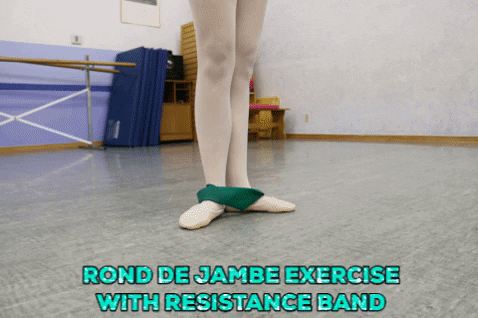
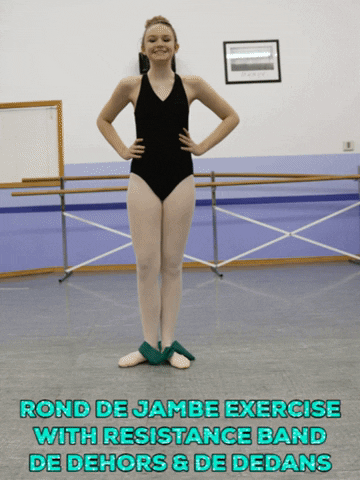
- Tie the TheraBand Resistance Band so it loops snugly around your mid-thighs
- Stand in first position (you may want to use the barre or a chair for support)
- Concentrate on your rotation as you do ten Rond de Jambes en Dehors
- Then complete ten Rond de Jambes en Dedans
Working on your turnout takes dedication and practice. Your body limits your rotation, but most dancers can improve if you strengthen your hip muscles.
References
Wilmerding, V. and Krasnow, D. (2011). Resource Paper: Turnout for Dancers - Hip Anatomy and Factors Affecting Turnout. International Association for Dance Medicine & Science. Retrieved from http://bit.ly/2BWh8C0
Medical Disclaimer: The information provided on this site, including text, graphics, images and other material, are for informational purposes only and are not intended to substitute for professional medical advice, diagnosis or treatment. Always seek the advice of your physician or other healthcare professional with any questions or concerns you may have regarding your condition.

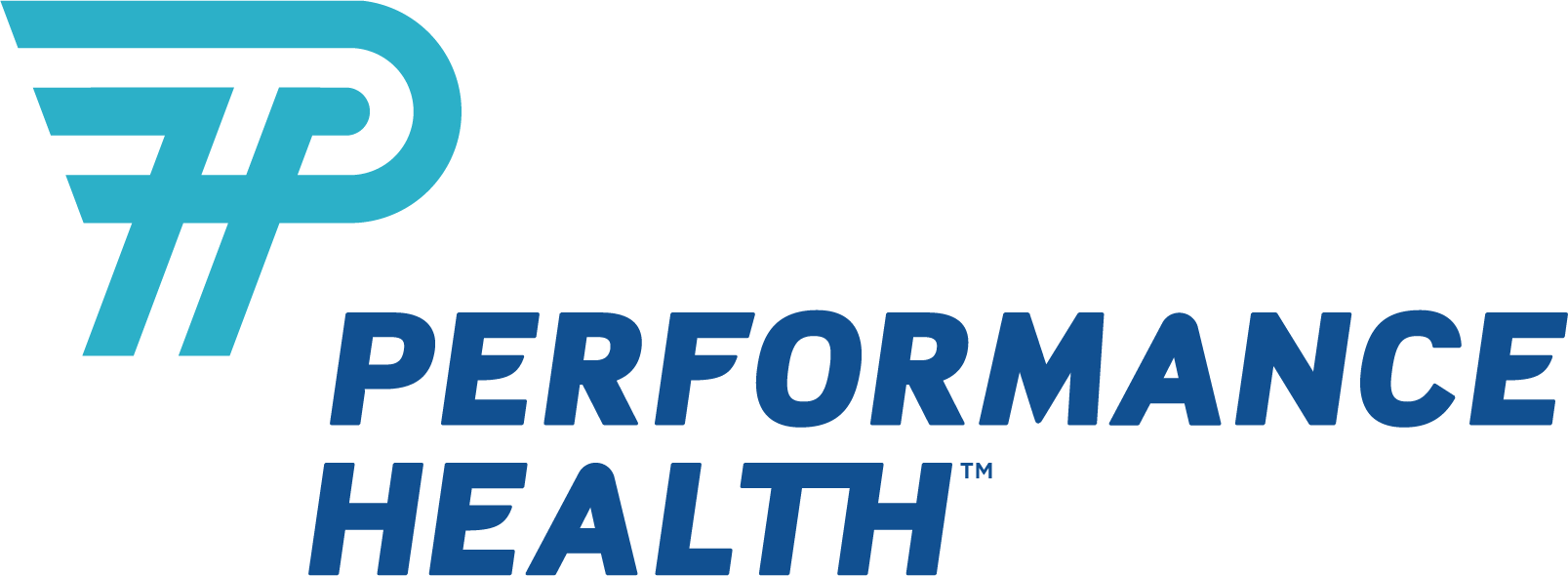






 France
France Australia
Australia

